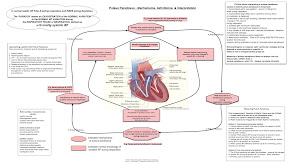Treatment of latent tuberculosis infection: An update.
Lobue. Respirology (2010) 15, 603–622
http://onlinelibrary.wiley.com/doi/10.1111/j.1440-1843.2010.01751.x/abstract
This article provides a good review of existing trials conducted on the efficacy, safety, cost effectiveness, and compliance of latent TB treatment regimens.
The author concludes that:
As long as 9months INH remains the standard therapy, LTBI treatment will remain expensive with a greater than desirable risk of adverse events and have suboptimal public health impact, because of poor acceptance by many patients and providers. At the moment, this regimen is considered the regimen of first choice, but two acceptable alternatives are 4 months of INH plus rifampin or 4 months rifampin mono-therapy. Of the two alternatives, the 2-drug regimen has been tested in more trials, and has equivalent completion, toxicity, and effectiveness as 6–9 months INH. Therapy with 4 months rifampin alone has significantly better completion, and signifi- cantly lower toxicity than INH. These are very impor- tant advantages, but effectiveness remains uncertain as this regimen has not been tested as extensively in randomized trails.
Treatment for people with exposure to MDR-TB remain poorly studied. Current recommendations (CDC and Francis J. Curry National Tubercu- losis Center) are based on expert opinion of likely susceptible drugs based on MDR-TB's resistance patterns but are not evidence-based; there have been no clinical trials for the use of these regimens in contacts of patients with MDR TB.
CDC Guideline:
Candidates for the Treatment of LTBI
Persons in the following high-risk groups should be given treatment for LTBI if their reaction to the Mantoux tuberculin skin test is ≥5mm:
- HIV-infected persons
- Recent contacts of a TB case
- Persons with fibrotic changes on chest radiograph consistent with old TB
- Patients with organ transplants
- Persons who are immunosuppressed for other reasons (e.g., taking the equivalent of >15 mg/day of prednisone for 1 month or longer, taking TNF-aantagonists)
In addition, persons in the following high-risk groups should be considered for treatment of LTBI if their reaction to the Mantoux tuberculin skin test is ≥10 mm:
- Recent arrivals (< 5 years) from high-prevalence countries
- Injection drug users
- Residents and employees of high-risk congregate settings (e.g., correctional facilities, nursing homes, homeless shelters, hospitals, and other health care facilities)
- Mycobacteriology laboratory personnel
- Persons with clinical conditions that make them high-risk
- Children under 4 years of age, or children and adolescents exposed to adults in high-risk categories
 1 dose of oseltamivir alone (OS+) survived versus 24% of patients who had no evidence of anti‐influenza antiviral treatment (OS−) (
1 dose of oseltamivir alone (OS+) survived versus 24% of patients who had no evidence of anti‐influenza antiviral treatment (OS−) (
 6–8 days after symptom onset. Multivariate modeling showed 49% mortality reduction from oseltamivir treatment.
6–8 days after symptom onset. Multivariate modeling showed 49% mortality reduction from oseltamivir treatment.





